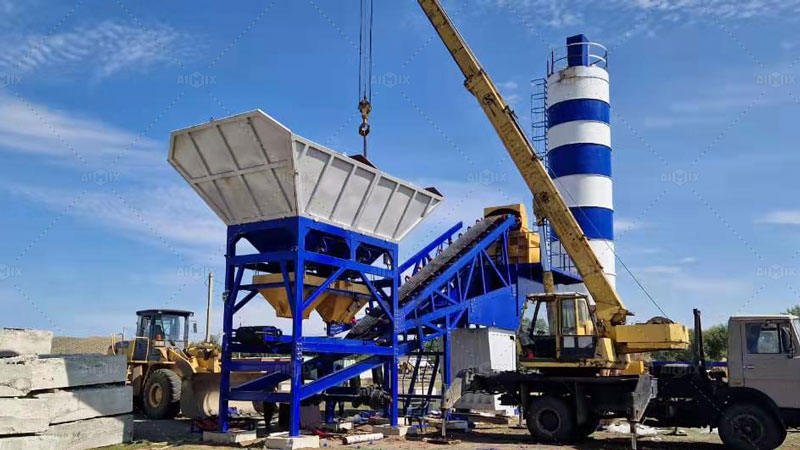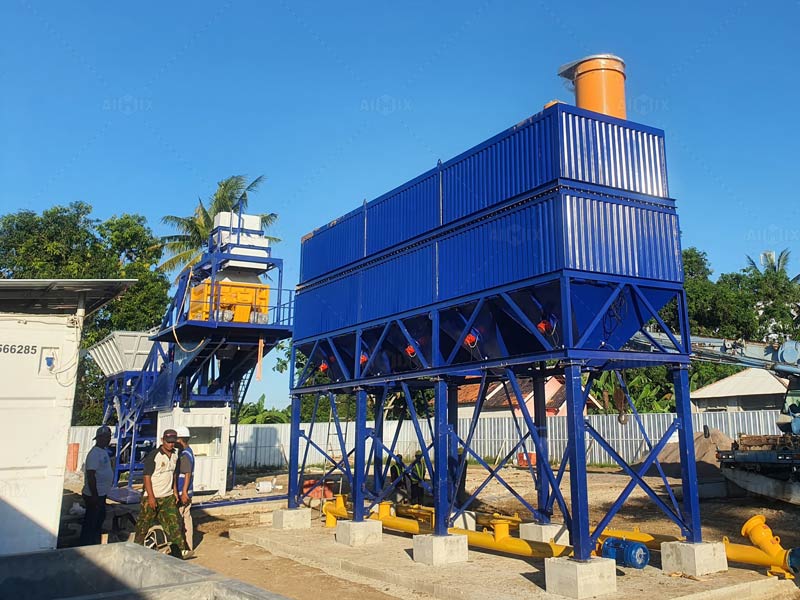When space is tight on a job site, contractors often face logistical and financial challenges. One major consideration is how to efficiently produce concrete without compromising productivity or budget. In such cases, a mobile concrete plant may appear to be the ideal solution. But is it truly cost-effective compared to a stationary or small concrete plant? This article explores the pros, cons, and cost considerations of choosing a mobile solution when working with limited site space.
Understanding Mobile Concrete Plants
What Is a Mobile Concrete Plant?
A mobile concrete plant(planta de concreto movil) is a type of batching plant that is designed to be easily transported and installed at different job sites. It typically includes a portable chassis, integrated aggregate storage, cement silos, a mixer, and control systems. Mobile plants are often used for infrastructure projects, road work, or temporary job sites where mobility and fast setup are key requirements.
Comparison with Small and Stationary Concrete Plants
While both a mobile and a small concrete plant may offer compact footprints, the key difference lies in their mobility. A stationary plant is fixed at one location and typically requires a solid foundation and extensive setup, while mobile units can be moved frequently with minimal installation work. However, a stationary plant may offer higher capacity and durability in long-term projects.

Space Efficiency and Layout Advantages
Adaptability to Confined Spaces
One of the main benefits of a mobile concrete plant is its compact, modular design. On sites with limited space—such as urban construction zones, mountain roads, or remote infrastructure jobs—a mobile plant can be set up on a small footprint without needing additional storage yards or extensive civil works. This is especially important when land is expensive or difficult to acquire.
Quick Installation and Relocation
Mobile plants can usually be installed within 1 to 3 days and relocated with minimal disassembly. This saves both time and labor, especially on short-term projects where frequent relocation is required. Compared to traditional plants, the fast installation process can be a major advantage in time-sensitive contracts.
Cost Considerations
Initial Concrete Plant Price
The concrete plant price(planta de concreto precio) for a mobile unit generally ranges from $50,000 to $120,000, depending on capacity (25–75 m³/h), brand, and automation level. While this may seem higher than some fixed small concrete plant options, the value lies in the mobility and reduced setup cost. For instance, a stationary plant may cost $30,000 to $80,000 but may require additional civil works and infrastructure costing $10,000–$20,000.
Installation and Transport Costs
Unlike stationary systems that need foundations, anchoring, and extensive wiring, a mobile plant is plug-and-play. Transport costs are also lower due to its trailer-based structure. For contractors working on multiple short-term sites, the ability to move the plant without dismantling every component translates into lower cumulative costs over time.
Labor and Operational Efficiency
Mobile plants typically require fewer workers for setup and operation. With integrated control systems, even small teams can operate them efficiently. This helps save on labor costs and reduces human error. Over the long term, labor efficiency can significantly impact total project costs, especially when producing concrete daily on a tight schedule.

Production Flexibility
On-Demand Concrete Production
One of the major cost-saving advantages of a mobile concrete plant and small concrete plant(planta de concreto pequeña) is the ability to produce concrete on-site and on-demand. This eliminates delivery delays, minimizes waste, and improves mix consistency. It also reduces dependence on external suppliers, which is particularly beneficial in remote or underdeveloped areas where ready-mix delivery is unreliable or expensive.
Customization and Batch Accuracy
Modern mobile plants offer advanced batching systems with precise control over water, cement, and aggregate proportions. This results in consistent concrete quality and helps avoid overuse of materials—leading to reduced costs and fewer rejected loads. Some units also come with self-diagnostics and digital interfaces that increase operator control and reduce downtime.
Long-Term Economic Viability
Ideal for Multi-Site Operations
Contractors working across multiple sites benefit most from a mobile solution. The cost of relocating a stationary concrete plant(planta de hormigon) can be prohibitively high due to the need for disassembly, transport, and reinstallation. In contrast, mobile plants are designed for this purpose and can be moved quickly, allowing companies to use one asset across several projects.
Maintenance and Lifespan
Modern mobile batching plants are built with durable materials and often require less maintenance due to simplified mechanical systems. Many are designed to last 10–15 years with proper upkeep. While mobile units are subjected to wear from frequent transport, this can be mitigated through protective storage and preventive maintenance programs. Over time, the cost per cubic meter of concrete produced can be significantly lower than relying on third-party suppliers or transporting concrete from a distant fixed plant.
Conclusion
When working on a site with limited space, choosing a mobile concrete plant can be a highly cost-effective solution. While the initial concrete plant price may be slightly higher compared to a stationary or small concrete plant, the savings in transport, setup, labor, and operational efficiency often outweigh the difference—especially for contractors handling multiple short-term projects. Ultimately, the decision depends on project duration, frequency of relocation, available space, and production volume. For many builders, mobility is not just a convenience—it’s a smart investment.